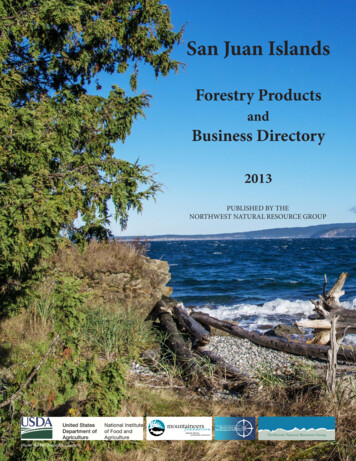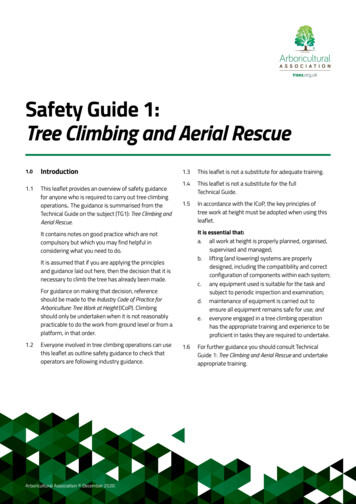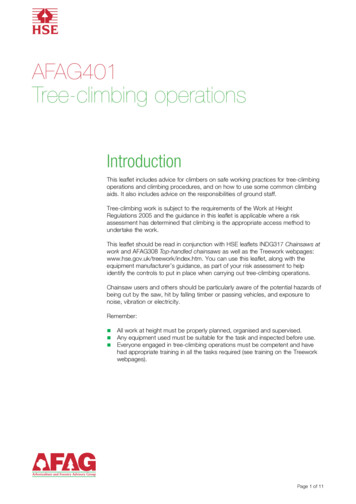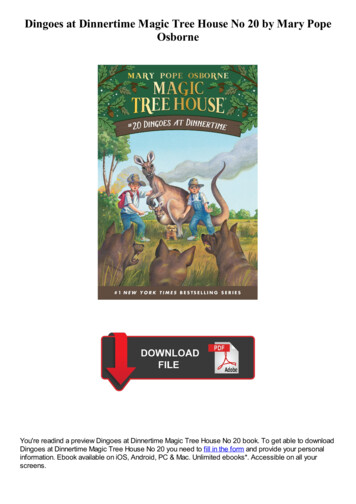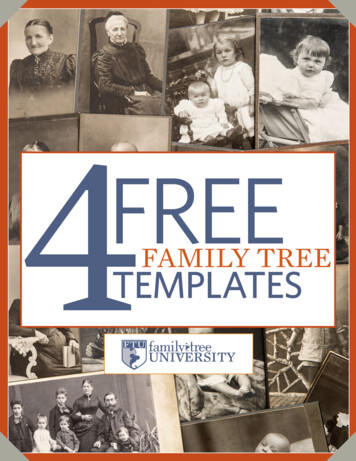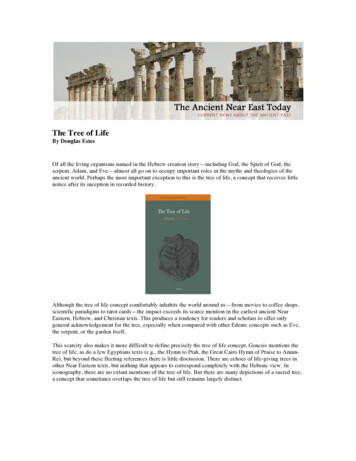
Transcription
The Tree of LifeBy Douglas EstesOf all the living organisms named in the Hebrew creation story—including God, the Spirit of God, theserpent, Adam, and Eve—almost all go on to occupy important roles in the myths and theologies of theancient world. Perhaps the most important exception to this is the tree of life, a concept that receives littlenotice after its inception in recorded history.Although the tree of life concept comfortably inhabits the world around us—from movies to coffee shops,scientific paradigms to tarot cards—the impact exceeds its scarce mention in the earliest ancient NearEastern, Hebrew, and Christian texts. This produces a tendency for readers and scholars to offer onlygeneral acknowledgement for the tree, especially when compared with other Edenic concepts such as Eve,the serpent, or the garden itself.This scarcity also makes it more difficult to define precisely the tree of life concept. Genesis mentions thetree of life, as do a few Egyptians texts (e.g., the Hymn to Ptah, the Great Cairo Hymn of Praise to AmunRe), but beyond these fleeting references there is little discussion. There are echoes of life-giving trees inother Near Eastern texts, but nothing that appears to correspond completely with the Hebraic view. Iniconography, there are no extant mentions of the tree of life. But there are many depictions of a sacred tree,a concept that sometimes overlaps the tree of life but still remains largely distinct.
Tomb painting, Valley of the Kings: Tomb of Thutmose (reigned 1502–1448 BCE; Keel, Symbolism, fig.253). Line drawing by Othmar Keel.Tomb painting, Deir el Medinah: Tomb of Sennudyem, 19th dyn. (1345–1200 BCE, Keel, Symbolism, fig.254). Line drawing by Othmar Keel.Therefore, the tree of life is primarily a biblical concept, one whose meaning is rooted in the Genesis textand readings that occurred over the next several millennia. As a result, perhaps the most importantstatement that can be made about the tree is that it is—perhaps deliberately—a polyvalent concept withmany facets of meaning. In other words, the tree intentionally has a number of meanings that refers readersto several important ideas, branches of which the contributors in The Tree of Life explore in great detail.The tree of life is a reminder of creation, a sign of life, a means for wisdom, a mark of what humanity lost,and a vision of a future hope.Once past Genesis, the tree occurs explicitly only in one other canonical Hebrew text—Proverbs. Here theauthor transforms the concept into a metaphor meant to symbolize the value of wholeness and
righteousness. Of course, interesting trees occur in other texts (notably Psalms and Ezekiel), but the lack ofspecificity suggests these are echoes of the tree of life, not direct references. Perhaps this is part of themystery of the tree.Scarab, Beth-El, Iron I-IIA (Keel, Goddess and Trees, fig. 72).By the Second Temple Period, direct (non-metaphorical) references to the tree of life begin to appear in asmattering of works (e.g., the apocalypses of Ezra and the various books of Enoch). These reinforce theidea that the tree of life is a focal point for divine presence and agency, pointing to what God gives in thepast and the future. These references were also reflected in material culture; for example, the designers ofthe menorah of the second temple may have had the tree of life in mind for their design.Menorah Token, lead, Israel, 4th–6th c. CE. (Walters Art Museum.)
Joseph Asarfati, ‘Menorah,’ Cervera Bible, Lisbon, Biblioteca Nacional de Portugal, MS. IL. 72, fol. 316v.1299–1300.An interesting phenomenon occurs when we reach the New Testament period. From a Christian context,the tree of life (as explicit, non-metaphorical mention) only occurs in the very first book of the canon, at thebeginning; now it occurs only in the very last book of the canon, at the end: “Blessed are those who washtheir robes, so that they may have the right to the tree of life, and may enter by the gates into the city” (Rev.22:14). It is almost as if the tree of life is meant as symbolic “bookends” to the Christian story—what Godestablished at first and meant for humanity will be restored at last. It also may indicate an idea that seems toresonate today more than it has in times past—that “heaven” is actually “Eden,” restored.The intense speculation about this heaven among the first Christians—and their reading of Revelation—resulted in curiosity over a literary device. In the Greek of the day, tree could refer to either a tree in thenatural sense (a fig or a fir) but also to the cross on which Jesus hung. Thus, many early Christians saw thetree of life as a symbol of the cross. Over time this symbol of the cross of Christ as the tree of life made itsway into medieval art adorning churches and crosses, gospel manuscripts and silver bowls.It is perhaps no surprise that the vaunted antagonists of the early church—the group of thinkers andspeculators that we today call Gnostics—also had their own take on the tree of life. To mark a contrast withtheir theological detractors, Gnostic writers typically supplanted this singular tree originally found in thecenter of the garden with the other named tree in the garden, the tree of knowledge of good and evil. Thiswas to show that knowledge is what really brings eternal life. Gnostic writers further a tradition that we cantrace to Second Temple period texts wherein the writer conflates these two trees as if they were the same.They are not.
‘Lignum vitae,’ London, British Library, Harley MS 5234, fol. 5r. ca. 1274–1300.From medieval culture to today, the tree of life continues to make inroads into both culture and theology.One example of these overlaps is in Northern Europe, a place where Christian missionaries met resistancefrom followers of other religions (pagans as they are typically referred to today). These pagans already hada myth about a tree—Yggdrasil—that was of such importance to their beliefs that they designed theirmeeting places around it. Over time as descendants of these pagans embraced the Christian faith, Yggdrasilbecame the tree of life, which they entered into any time they went to church. The ancient stave churches ofthe Norse country still stand as a testament to this struggle over faith and practice, where Christians learnedto speak the language and adopt the styles of the people with whom they hoped to gain an audience.Borgund church. Photograph by Neve Nera.
Returning full circle, the tree of life continues its slow and steady progress from its ancient roots into themodern world as an important biblical symbol, one that may today even eclipse most other elements in theoriginal Hebrew creation story in cultural acceptance. In this case the tree of life is a symbol of whathumanity lost, but can find again—the hope of the future embedded in the past.Douglas Estes is associate professor of New Testament and practical theology at South University. He isthe editor of The Tree of Life (Brill, 2020) and serves as editor of the journal, Didaktikos.
their theological detractors, Gnostic writers typically supplanted this singular tree originally found in the center of the garden with the other named tree in the garden, the tree of knowledge of good and evil. This was to show that knowledge is what really brings eternal life. Gnostic writers further a tradition that we can





